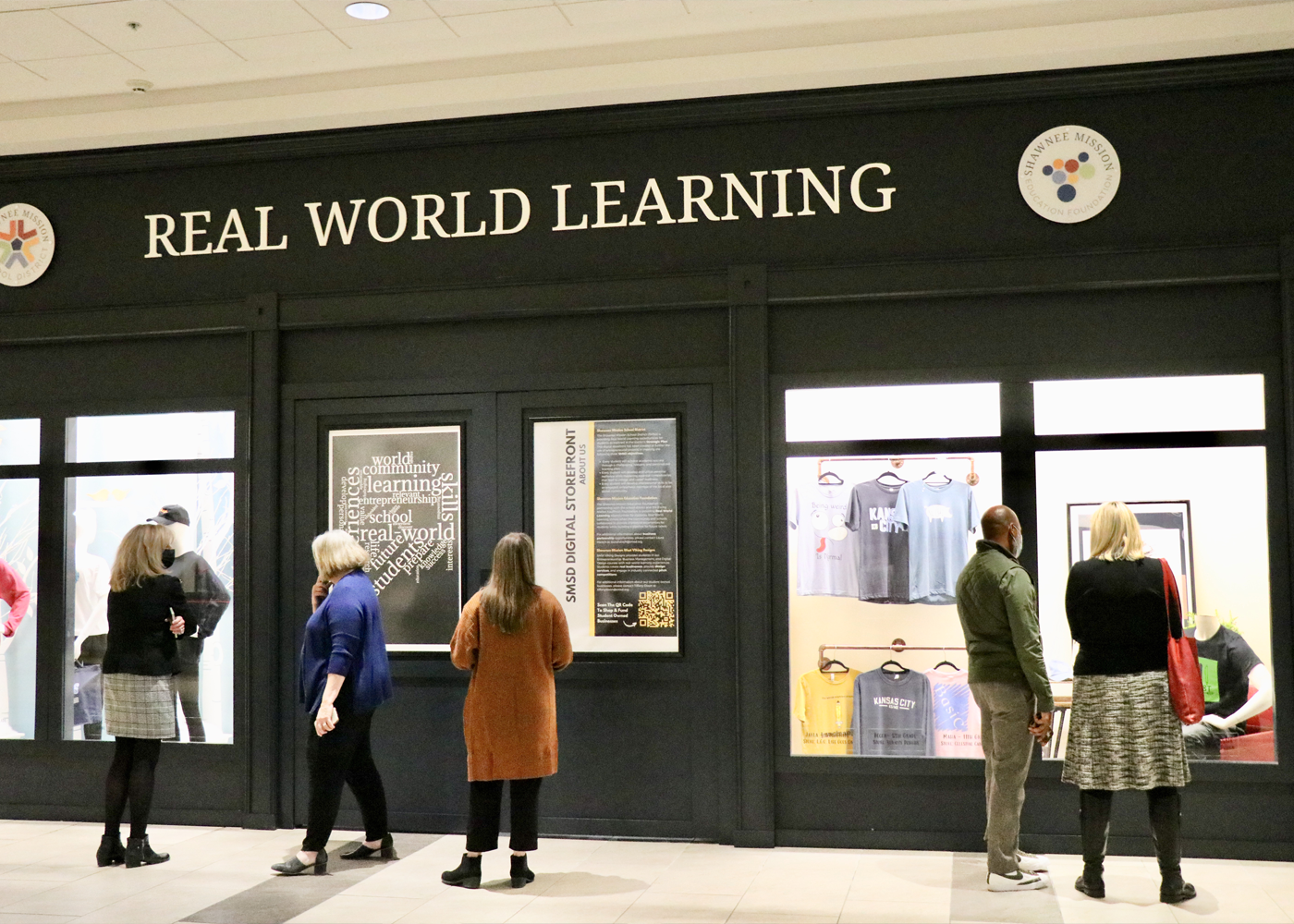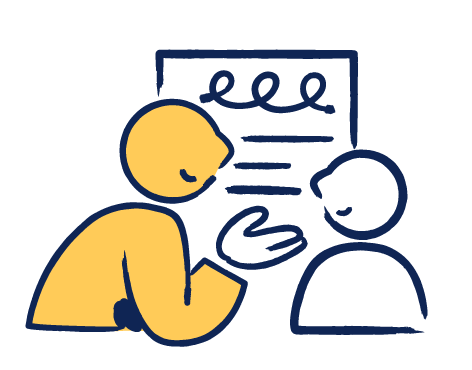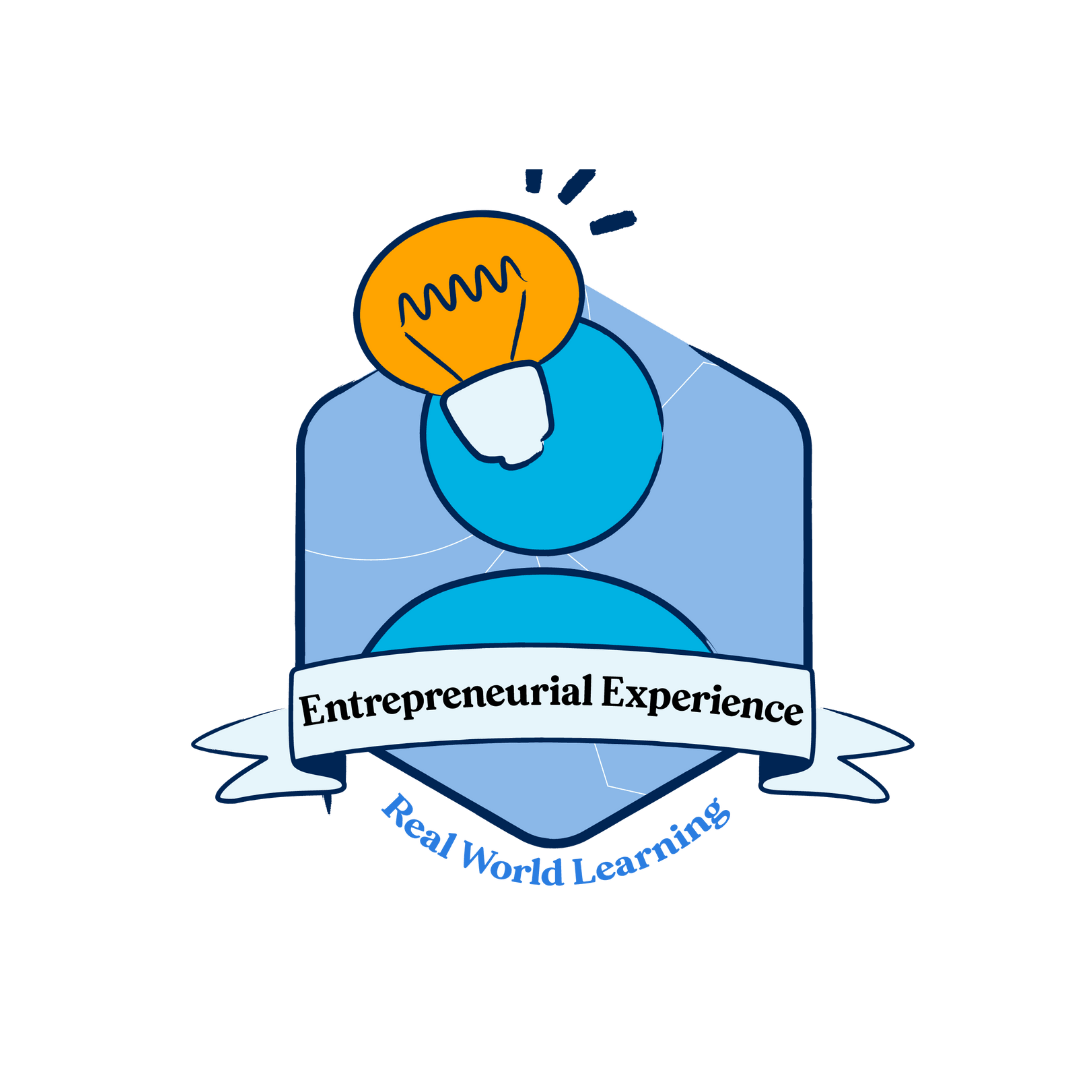
Entrepreneurial Experiences
Creative Problem Solving
Using input and support from multiple stakeholders, learners iteratively analyze, prototype, implement, reflect on, and adapt potential solutions to a problem.
An Entrepreneurial Experience (EE) equips students with the knowledge, skills, and mindset needed to pursue entrepreneurial ventures, whether it’s starting their own businesses or becoming innovative leaders in various industries. An EE could include all or some of the below principles and practices of entrepreneurship:
- Business Fundamentals: Students learn about the basics of starting and running a business, such as creating a business plan, understanding market research, and identifying target customers.
- Innovation and Creativity: Students think innovatively and creatively to develop unique business ideas and solutions to real-world problems.
- Marketing and Sales: Students learn about marketing strategies, branding, advertising, and sales techniques to effectively promote their products or services.
- Financial Literacy: Students learn financial management, budgeting, pricing strategies, and understanding financial statements.
- Risk Management: Students learn about assessing and managing risks associated with starting and running a business, including legal and ethical considerations.
MVA-level EEs need a connection to the external business community. Why?
Bridge the Gap Between Theory & Practice
Professionals can offer insights that go beyond the classroom setting. Feedback helps students understand market dynamics, customer needs, and industry trends, which are essential for developing viable business ideas.
Fostering networking opportunities
Interacting with professionals allows students to expand their professional networks, potentially leading to mentorship, internships, or future collaboration opportunities.
Adding Credibility
Students can gain confidence in their ideas and projects when they receive validation or constructive criticism from experienced professionals. This validation can motivate students to develop their skills further.
MVA Definition: Entrepreneurial Experiences
Using input and support from multiple stakeholders, learners iteratively analyze, prototype, implement, reflect on, and adapt potential solutions to a problem. Outputs of entrepreneurial experiences typically include some of the following:
- Learners themselves identify, research, and develop a solution to solve a social or market problem.
- Market and stakeholder research summary,
- “Business plan” that includes an assessment of costs and benefits associated with the development and operation of their solution,
- Feedback from relevant external stakeholders obtained through exhibition or “shark-tank” type pitch opportunities.
5 Key Components for Entrepreneurial Experience Planning
-
Quality Considerations
One
—Students use a human-centered approach to solve a problem.—There is evidence of a need. An example might include getting stakeholder input or conducting research to identify the scope and scale of the need.—Evidence of ideating solutions, costs and benefits and a rationale of final choice.

-
Student Support
Two
—The school has an RWL-informed coordinator/liaison to refer students to entrepreneurial opportunities available in specific courses.—Counselors are able to share out-of-school programs where students can gain Entrepreneurial Experiences.—Designated school staff and/or teachers serving as facilitators/coaches for students.

-
Making it “Real”
THREE
—Engage in at least 24 hours of project work with a professional mentor within a semester (or a pre-determined number of weeks).—Complete a “business plan” or final “pitch” detailing the process of problem definition, solution definition, and minimum viable product of solution.—Complete at least 3–4 client (could be potential customers or people they intend to impact) check-ins prior to the final delivery of the pitch.

-
Student Agency & Voice
FOUR
—Students request and receive feedback from professional mentors.—Students can describe their experience and the value of the achievement and are prepared to add it to their resume or LinkedIn profile.

-
Assessment & MVA Completion
FIVE
—Students show evidence of problem-solving and documentation of their process.—SMEs provide feedback through a pitch, business plan, or other evidence of experience.

